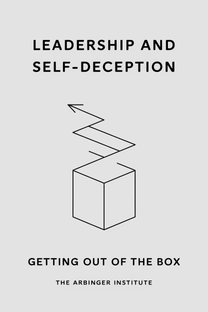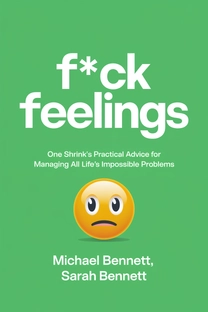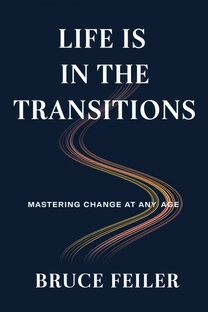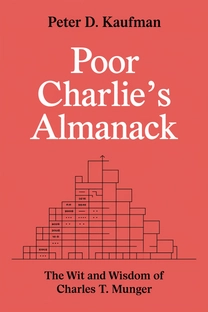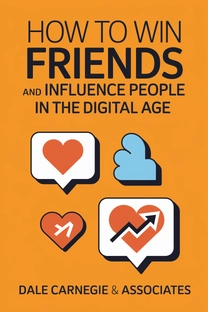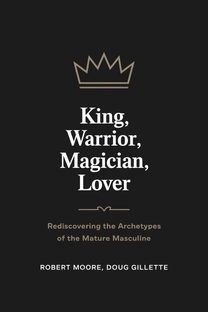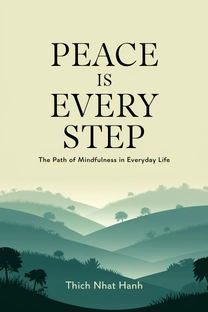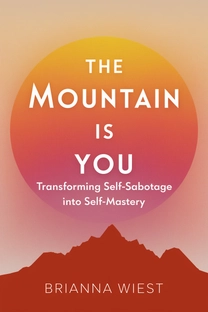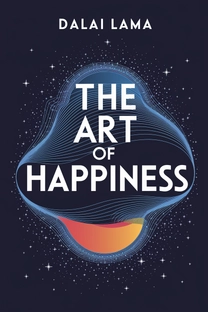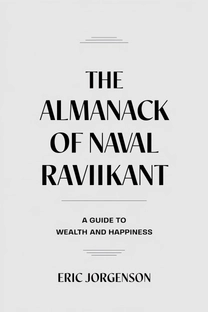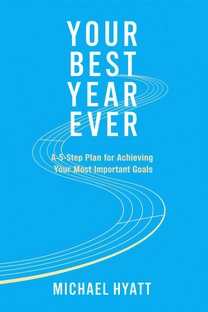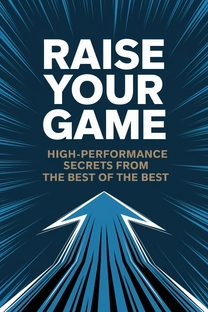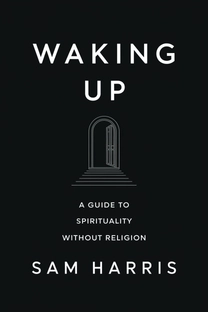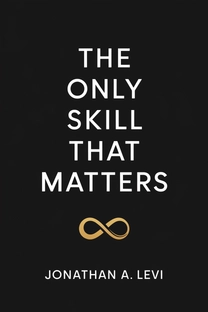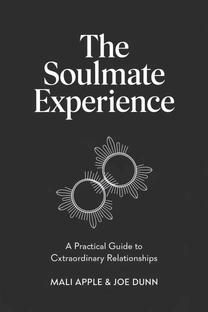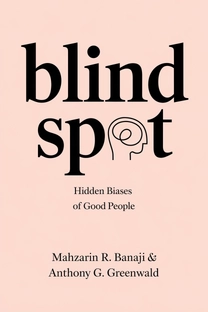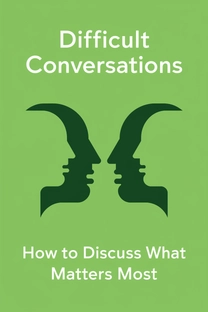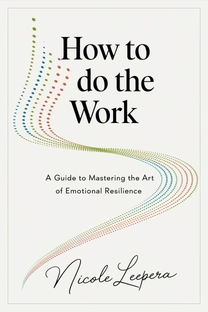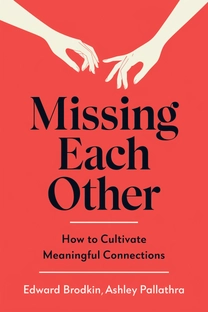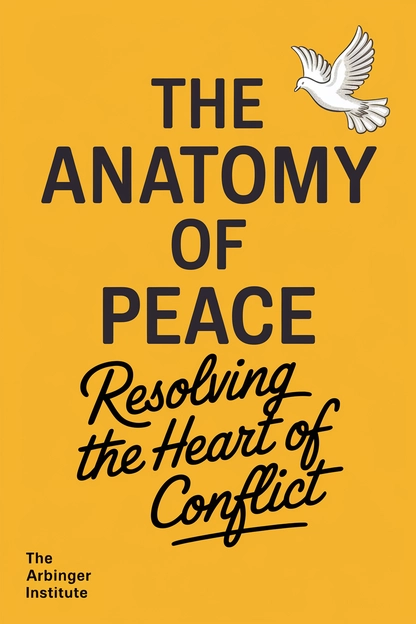
The Anatomy of Peace
Resolving the Heart of Conflict
by The Arbinger Institute
Brief overview
This book explores how our inner conflicts shape the way we behave at home and work. By explaining why we sometimes see people as objects and how these perceptions fuel ongoing struggles, it reveals a path toward genuine peace and reconciliation. Through a blend of storytelling and practical models, it provides specific guidance for changing our own attitudes so we can transform our relationships and create lasting harmony.
Introduction
Imagine walking into a room full of parents at their wits’ end about teenage rebellion, or employees tied in knots over workplace feuds. This book drops us among people who have been pushed to the brink by various conflicts. Yet instead of pointing to simple problem-solving tactics, it sets its sights on a deeper, more urgent issue: the hidden ways we perpetuate discord.
We follow relatable characters—worried parents, anxious spouses, exasperated coworkers—who learn to see that the problems aren’t just “out there” in difficult circumstances, but within the unspoken attitudes and justifications in their own hearts. By uncovering how these internal battles lead to more struggles, the book invites us to consider how peace can be found first in ourselves.
This opening page sets the stage for a conversation about transformation—from resentment to empathy, from blame to accountability. You’ll meet real scenarios that echo many aspects of our lives: the child who won’t listen, the spouse who withdraws, the colleague who won't cooperate. In reading their stories, you’ll find glimmers of insight that guide you to an unexpected and ultimately more satisfying path to resolution.
The Heart of War
Beneath every conflict lies a critical question: are we seeing others as *people* with hopes and challenges as real as our own, or as *objects* that we blame or use? When we see them as obstacles or tools, our hearts move toward war. This war might rarely involve actual violence, but the feelings of frustration, anger, and judgment can be just as destructive.
In the book’s storyline, we learn about historical examples like Saladin, who showed compassion even to his enemies. His approach highlights that two people might do the same thing—like conquering a city—yet one does it with genuine care for others’ humanity, and the other does it with disregard. These radically different motivations change the outcome for everyone involved.
The concept of a “heart at war” is captured by how we respond to annoyance or disagreement. When you tense up internally, you start to view the other person in a smaller, one-dimensional light: an adversary. By focusing on their faults, you feel justified in your own negative behavior. Recognizing this cycle is vital for creating the possibility of peace instead of choosing sides in a silent battle.
What is The Anatomy of Peace about?
"The Anatomy of Peace: Resolving the Heart of Conflict" by the Arbinger Institute offers a profound exploration into how our internal discord influences our external relationships. By delving into the essence of human behavior, this book crucially identifies that many of our conflicts stem from the way we perceive others as objects rather than as individuals with their own valid perspectives. Through storytelling interwoven with practical models, it paves a path for genuine understanding, urging individuals to transition from attitudes of war to hearts of peace.
The narrative operates on the belief that peace begins from within, unraveling the impacts of differing views and self-justifications on personal and professional fronts. It presents actionable steps – such as adopting the Peacemaking Pyramid – to break free from harmful cycles and foster environments where understanding and reconciliation can thrive. The book's unique value proposition lies in its ability to articulate how seeing others as people, rather than objects, not only resolves conflict but nurtures enduring relationships that transcend adverse circumstances.
By transforming how we perceive and react to the world, "The Anatomy of Peace" serves as a catalyst for peace on both personal and societal levels. This transformative approach not only holds the potential to mend relationships but also to reshape our collective world views, underscoring the book's significance and timeless relevance.
Review of The Anatomy of Peace
"The Anatomy of Peace: Resolving the Heart of Conflict" by the Arbinger Institute stands out for its ability to diagnose the root causes of modern-day conflicts and offer enduring solutions. The authors intelligently weave a narrative that breaks down complex concepts into accessible, practical insights, targeting the reader's capacity to change from within rather than imposing external solutions. Through compelling storytelling, the book demonstrates how long-standing conflicts can be resolved by embodying empathy and adopting an 'I-Thou' perspective instead of an 'I-It' one.
Key strengths of the book lie in its practical framework - like the Peacemaking Pyramid - which systematically guides readers in addressing issues at their core, focusing more on the human aspects rather than mere behavioral adjustments. Readers are encouraged to step out of self-justifying "boxes" that perpetuate conflict and instead see others for who they truly are. With its reader-friendly structure and apt real-life examples, the book ensures that these profound concepts remain engaging and comprehensible, offering direct applicability in everyday scenarios.
The book resonates with a wide audience, particularly those in leadership, counseling, and community roles, who can draw insights into managing interpersonal tensions constructively. Its practical applications extend to any environment where conflict resolution and understanding are vital. For anyone seeking an introspective approach toward peace, "The Anatomy of Peace" comes highly recommended, illuminating a sustainable path to harmonious coexistence through profound inner transformation.
Who should read The Anatomy of Peace?
- Corporate leaders seeking to cultivate a peaceful work environment and build strong relationships through empathetic leadership.
- Counselors and therapists who can use the book's concepts and tools to guide their clients towards internal peace and conflict resolution.
- Parents and educators interested in developing constructive communication skills that foster understanding and reduce familial strife.
- Individuals involved in community-building efforts to promote harmony by addressing underlying attitudes that contribute to division.
- Law enforcement and peacekeeping professionals who require strategies to resolve disputes without escalating tensions.
About the author
Book summaries like The Anatomy of Peace
Why readers love Mindleap
10-Minute Book Insights
Get the core ideas from the world's best books in just 10 minutes of reading or listening.
Curated For You
Discover your next favorite book with personalized recommendations based on your interests.
AI Book ExpertNew
Chat with our AI to help find the best book for you and your goals.
Reviews of MindLeap
Love how I can get the key ideas from books in just 15 minutes! Perfect for my busy schedule and helps me decide which books to read in full.
Alex R.
The summaries are incredibly well-written and the audio feature is perfect for my commute. Such a time-saver!
Jessica M.
Great app for personal growth. The insights are clear and actionable, and I love how they capture the essence of each book.
Chris P.
The app is beautifully designed and the summaries are top-notch. Definitely worth every penny!
Sarah K.



